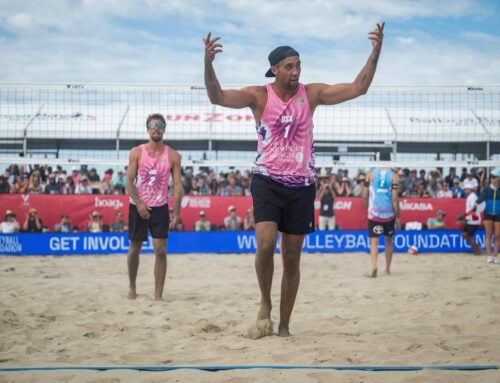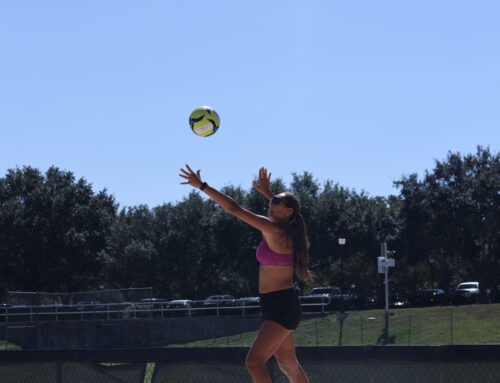OSTRAVA, Czech Republic — I’d never been to Ostrava before. This came as a surprise to many of the players and staff, given how much I’ve covered and played and coached the game for the last eight years. It was one of the few remaining venues and sites on my beach volleyball bucket list.
It should be on yours.
I’ve never seen a sporting venue like it. I believe that the foundation of the Beach Pro Tour – of beach volleyball in general – should be the beach, and the natural beauty of the city or country hosting the event. Ostrava, a city built around its robust mining and metallurgical industry, does that, in a manner as unique and spectacular as anything I’ve seen in sports. It takes its strengths — a rich history, a strange sort of untraditional beauty that is not a beach or mountain or desert but something manmade and as distinct as a fingerprint — and doubles down on it, creating a wondrous, deliciously creative sporting venue, one that is so popular, in fact, that Ostrava was named, in 2014, the European City of Sport.
Out of all of Europe! And Ostrava, the third-most populated city in a small country, was the City of Sport.
My wife, Delaney, who has played in both Prague and Brno and loves the Czech Republic, asked if it’s as cool as it looks on TV.
Even cooler.
Way cooler.
On TV it looks tight and charming and intimate. In many ways, it is still all of those things, but in person, it is massive, a steel city that weaves around the courts. You can climb and get a birds-eye view of the second court, which is tucked under a tower and piping made of, as I learned, pig iron. A distinctly European-style cobblestone walkway snakes through the venue, decorated with food and beer trucks and tasteful sponsor tents and fan activations: cross-net and corn hole and various tailgate games. There’s a subtle VIP section, a practice court just for fans.
If you haven’t been, you must, because even though I’ve now been, I know that it is a tournament to which I must now return, on a hopefully annual basis.
“It’s an incredible place to play,” David Ahman, the gold medalist at this past week’s Beach Pro Tour Elite event, said. “This venue is unlike anything else in the world. We really like playing here and the fans are amazing.”

The incredible Ostrava venue/Volleyball World photo
The Small Things That Make A Big Event
There are, however, many incredible places to play beach volleyball. Stunning venues are the very foundation of the sport. The venue alone won’t separate any one event from the next; even Gstaad, a place so breathtaking it still feels plucked out of CS Lewis’ world of Narnia, must bring more to the table than simply beauty and beach volleyball.
There must still be a differentiator, and in Ostrava (and, I feel compelled to note, Gstaad), there is.
It’s one of the cleanest, most professionally-run events I’ve ever been to. This, no doubt, is thanks to seven years running the event, where each iteration is improved upon from its predecessor. Ostrava also has a notable advantage in that it has been the final qualifying event for the previous two Olympic cycles, a place now pocked with history and massive intrigue and emotions of the highest and lowest depths. From an organizational perspective, however, there was a mastery of all things little, the small touches that seem minor but go a long way.
At every entrance to both the center court and court two, there was a printed schedule of the day’s matches, and it was updated when new matches were scheduled. When a rain delay paused a quarterfinal match between Anouk Verge-Depre and Zoe Verge-Depre and Italy’s Valentina Gottardi and Reka Orsi Toth, they were given ponchos.
Small things.
Enormous things.
That venue, like so many others on the Beach Pro Tour calendar, deserves the fastidious attention it gets from the organizers.
It’s what makes Ostrava, to me, one of the four “majors” on the beach volleyball calendar. Not just any major, either.
The Iron Major.


